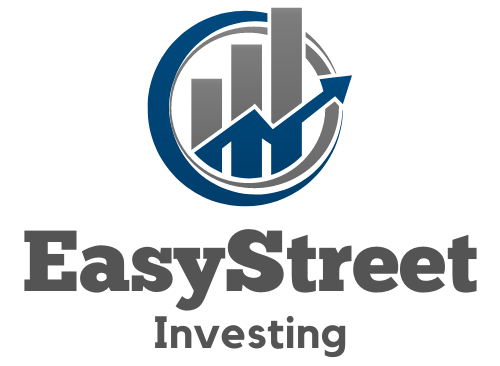In a financial landscape brimming with opportunities, savvy investors are constantly on the hunt for the golden goose—the high-yield assets that promise to plump up their portfolios. But there’s a catch: navigating this terrain requires more than just a treasure map. It demands a keen eye for optimizing portfolio allocation to ensure your investments aren’t just lucrative but also harmoniously balanced. Dive into our guide and you’ll unearth the secrets to striking that perfect investment blend, laying out a path to potentially robust returns without putting all your eggs in one basket.
Ever wondered how to get your money working harder for you? You’re not alone. High-yield assets beckon with their siren song of substantial returns, but tuning your portfolio to their frequency isn’t a walk in the park. We’ll walk you through the ins and outs, helping you understand how to mix these potent investments into your financial plan effectively. Expect actionable insights that could help you sidestep pitfalls and capture the upside potential, all while keeping risks at arm’s length. Get ready—your journey toward an optimized, high-yield portfolio starts here.
Important Highlights
1. Diversification is essential when incorporating high-yield assets into a portfolio; it’s critical to spread investments across various sectors and asset types to mitigate the inherent risks of chasing higher returns. High-yield assets often carry greater risk, which can lead to significant volatility, underscoring the need for a well-thought-out diversification strategy.
2. Understanding risk tolerance and investment horizons is crucial before allocating funds to high-yield assets. Investors should assess their comfort with potential market fluctuations and the possibility of loss, aligning their portfolio with their long-term financial goals and the ability to withstand short-term downturns.
3. The use of Modern Portfolio Theory (MPT), which emphasizes the benefits of investing in a mix of assets to maximize returns for a given level of risk, can be particularly beneficial. This theory supports the idea that adding high-yield assets to a diversified portfolio can potentially enhance returns while controlling for overall portfolio risk.
4. Regularly reviewing and rebalancing the portfolio is key to maintaining an optimal asset allocation that reflects current market conditions and personal financial objectives. High-yield assets can sometimes outperform other investments, leading them to become a larger proportion of one’s portfolio than intended, hence periodic adjustments are necessary to stay aligned with one’s strategic asset allocation.
5. Due diligence on individual high-yield opportunities is indispensable, as not all offerings are created equal. Investors should scrutinize credit ratings, past performance, management teams, and underlying fundamentals of high-yield investments like corporate bonds or real estate investment trusts (REITs) to ensure they align with their investment criteria and avoid potential pitfalls associated with chasing yield.
Understanding High-Yield Asset Classes
In the realm of investment, high-yield assets typically refer to financial instruments with a reputation for offering greater returns compared to their lower-yield counterparts. Common examples include high-yield bonds, dividend-paying stocks, real estate investment trusts (REITs), and certain types of mutual funds focused on income generation. Distinguishing these from more traditional investments is crucial when seeking an optimal portfolio balance.
Assessing Risk Versus Return in High-Yield Investments
The allure of high-yield assets lies in their potential to boost overall portfolio performance. However, it’s essential to weigh this against the inherent risks such as credit risk, market volatility, and liquidity issues. A comprehensive analysis involves examining credit ratings for bonds or the historical performance and stability of dividend-generating companies.
Strategic Asset Allocation for Portfolio Diversification
To mitigate risks while capitalizing on rewards, investors should adhere to the principles of asset allocation and diversification. This means spreading investments across various asset classes and sectors to reduce exposure to any single source of risk. Integrating high-yield assets requires a calculated approach to ensure they complement other components within the portfolio effectively.
Integrating High-Yield Assets into Your Investment Strategy
Crafting an investment strategy that includes high-yield options calls for a clear understanding of one’s financial goals and risk tolerance. Investors can use tools like modern portfolio theory (MPT) to determine the most efficient placement of high-yield assets within their portfolio’s framework. Balancing them against fixed-income securities and growth-oriented equities can enhance yield without disproportionately increasing risk.
Tactical Adjustments for Market Conditions
Market dynamics are ever-changing, which means that sometimes tactical adjustments are necessary. Monitoring economic indicators can guide when to increase or decrease the proportion of high-yield assets within a portfolio. In times of economic uncertainty or rising interest rates, shifting focus towards more defensive positions may be prudent.
Finding Synergy with High-Yield Bonds
High-yield bonds present a unique opportunity for investors willing to take on additional credit risk for potentially higher returns. These instruments often have a low correlation with traditional stock market indices, allowing them to act as a buffer during periods of equity market downturns while still providing attractive income streams.
Evaluating Dividend Stocks for Income Generation
Dividend stocks are popular among income-seeking investors due to their dual benefit of potential capital appreciation and regular dividends. Choosing companies with consistent dividend histories and solid fundamentals is key. Utilizing dividend yield and payout ratio metrics enables investors to select robust candidates for their portfolios.
Incorporating REITs for Real Estate Exposure
Real Estate Investment Trusts (REITs), which own and operate income-generating real estate, can be a powerful component in achieving higher yields. They offer liquidity compared to direct property investments and are known for distributing a significant portion of their taxable income as dividends.
Mutual Funds Specializing in High-Yield Assets
Mutual funds provide an avenue for gaining exposure to diversified high-yield assets through a single investment vehicle. They are managed by professionals who perform extensive research and maintain active management strategies aimed at maximizing returns while managing associated risks.
Selecting High-Quality High-Yield Opportunities
Vetting opportunities within the high-yield spectrum demands diligence and expertise—factors like issuer credibility, financial health, and industry trends play pivotal roles in decision-making processes. It is advisable to consult credible financial analysts’ reports available from established platforms like Morningstar.
Leveraging Tax Efficient High-Yield Investments
Tax efficiency is another aspect that must not be overlooked when optimizing portfolios with high-yielding assets. Certain accounts such as IRAs or 401(k)s offer tax advantages that can significantly impact net returns from investments like municipal bonds which are often exempt from federal taxes.
How Can You Continuously Optimize Your Portfolio?
- Analyze your current asset allocation regularly to ensure alignment with your investment goals and risk profile.
- Maintain awareness of macroeconomic changes that could influence the performance of high-yield asset classes.
- Diversify across different types of high-yielding investments—not just within a single category but across various sectors and geographies.
- Benchmark your portfolio’s performance against relevant indices to understand how well your high-yield investments are contributing relative to market averages.
- Rebalance your portfolio periodically based on performance assessments and shifts in market outlook.
- Consider consulting with financial advisors who specialize in income-generating investments for professional insights tailored to your individual circumstances.
- Educate yourself continuously about emerging high-yield investment opportunities through reputable financial news sources.
- Prioritize capital preservation while pursuing higher yields; remember that excessively chasing yield may lead you into unnecessarily risky territories.
Frequently Asked Questions
What are High-Yield Assets?
High-yield assets are investments that offer higher returns compared to average market rates. These can include stocks with substantial dividends, corporate bonds with high interest rates, or real estate investments with strong rental yields.
Why should I consider adding High-Yield Assets to my portfolio?
Including high-yield assets in your portfolio can enhance overall returns and provide a steady income stream. They can be especially useful for those seeking more aggressive growth or for retirees looking for regular income.
How do High-Yield Assets affect risk in my portfolio?
While potentially boosting returns, high-yield assets often come with increased risk. It’s important to balance them with more stable investments to ensure your portfolio is well-diversified and aligned with your risk tolerance.
Can you diversify with High-Yield Assets alone?
Diversification requires investing in various asset types. While high-yield assets can contribute to this diversity, they should be part of a broader mix that includes lower-risk options as well.
What percentage of my portfolio should be High-Yield Assets?
The ideal percentage varies based on individual goals and risk appetite. A financial advisor can help determine the right balance. As a rule of thumb, avoid overconcentration in any single asset class.
Are High-Yield Bonds the same as Junk Bonds?
No, although both terms refer to bonds with higher risk and return potential than investment-grade bonds, “junk bond” typically denotes a lower credit rating, implying higher default risk.
How frequently should I review my Portfolio Allocation?
You should review your allocation at least annually or after significant life events or market changes to ensure it stays aligned with your objectives and risk profile.
Is it wise to invest in High-Yield Assets during market volatility?
Careful consideration is needed during volatility. Some may view downturns as buying opportunities for discounted assets, while others might prioritize stability. Assess your risk tolerance and long-term goals before deciding.
What impact do interest rate changes have on High-Yield Assets?
Interest rate hikes can negatively affect high-yield asset prices, particularly bonds since their existing lower rates become less attractive compared to new issues at higher rates.
Should I manage my high-yield investments myself or seek professional help?
If you’re not confident in your ability to analyze and manage high-yield investments, seeking professional advice could be beneficial. Experienced investors might prefer direct management to maintain control over their choices.
Closing Insights on Yield-Driven Portfolio Strategies
Diving into the world of high-yield assets can be thrilling but requires a steady hand. It’s essential to recognize the balance between the lure of higher returns and the reality of increased risks. Diligent research, diversification, and continuous monitoring form the backbone of successfully integrating these potent tools into your investment strategy.
Your journey towards optimizing your portfolio allocation shouldn’t stop at acknowledging the potential of high-yield assets; it entails crafting a personalized investment map that navigates through market fluctuations and aligns with your financial horizon. Remember, the right mix is unique to each investor’s scenario—there’s no one-size-fits-all solution when striving for financial prosperity.

